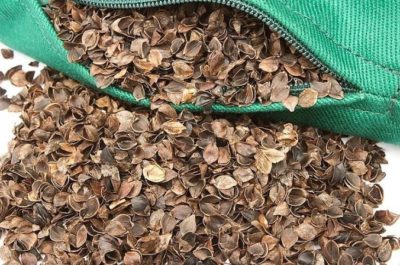Pregnancy is not only the joy of anticipation, but also significant physiological changes in a woman’s body. They are especially noticeable in the later stages during sleep, when you have to twist blankets and bedspreads under your stomach. And such a newfangled product as a pillow for pregnant women is a real salvation.

Pillow for pregnant women - what is useful and why is it needed
The stores offer a variety of pillow models, the design of which takes into account the physiological needs during pregnancy. Alas, not everyone can afford to buy such products, but there is an alternative - to sew them yourself. It is cheaper and personal preferences and requirements are always taken into account.

What are the benefits of using such pillows? Provides support for the spine and abdomen during sleep, with proper load distribution. The product makes it possible to relieve the neck joints, relax the muscles, ensuring healthy sleep.
After childbirth, such pillows can be used for other purposes:

- During feeding, it is convenient to use as a soft support for mother and child. Wrap the product around your waist and tie it at the back with ribbons designed for this purpose. The baby can be placed on top of the pillow to reduce fatigue during feeding.
- If you tie it in a ring in the same way and place it on a flat surface, you will get a kind of playpen-cocoon for a baby.
What material and filler to choose
When choosing materials It is important to pay attention to the hygiene and degree of comfort that they can provide. The fabric for the base is selected as natural as possible. That is, choose cotton, linen, calico. For pillowcases, you should choose similar fabrics or more pleasant and soft ones - fleece, velor, plush. If the external appearance of the pillow is soft and comfortable, then at the same time it will provide an “anti-stress” effect.

The choice of filler will be equally important. There is no single recommendation for all pregnant women, everything is individual (stiffness, elasticity), the main thing is that the filler provides convenience and comfort. For some, there is nothing better than synthetic fluff, while others are ready to fork out money for buckwheat husks. The modern range of fillers is large, but the most popular of them are:
- buckwheat husk, an environmentally friendly product that cannot cause allergies;
- holofiber is affordable and quite in demand;
- synthetic fluff, its properties are similar to holofiber;
- expanded polystyrene. Perfectly retains the shape of the product. Hypoallergenic, easy to care for, environmentally friendly.

When choosing, it is important to think through all the points, because the pillow will not be used for 1 day. It will have to be washed, so the product should be simple and easy to care for.
What you need and how to sew
Before sewing, you should first choose the shape of the product. They come in the form of the letter “G”, the English “U”, resembling a banana or bagel in shape. The most popular ones are considered to be in the shape of the letter “U”; we will consider their tailoring in detail. Their advantage is that it is easy to choose the size to suit your height.
What do you need
For sewing required:
- overlock, machine;
- matching threads;
- pins for chopping;
- scissors;
- a piece of soap or chalk;
- for patterns, tracing paper or newspapers, magazines;
- a piece of fabric for a pillow;
- a piece of fabric for a pillowcase;
- suitable type of filler.

The product must always be clean - this is a basic requirement for the hygiene of pregnant women. Therefore, it’s easier to sew 2-3 pillowcases at once, so that there are no problems with changing them.
Instructions, measurements, template
You can draw the template yourself, taking into account the height and optimal width of the product. Draw a pattern on paper with a pencil and cut it out; for sewing you will need 2 identical parts. Transfer the pattern to the fabric folded in half. Perform this operation for the second part. You will then need this pattern to sew a pillowcase.


Next, pin the two parts together with the right sides facing inward, cut them taking into account allowances of 1.5 cm wide. At the very top of the fold, mark a 25-30 cm segment, which will be sewn together at the very end, through which the pillow will be turned inside out.
Baste the top and bottom of the product along the marked lines and sew on a machine, leaving a hole. Process the cuts using an overlocker or a zigzag machine, and then turn them inside out. Fill to the desired density with the selected filler. Sew it up afterwards using a hand stitch or using a sewing machine.

After this, sew the pillowcase in exactly the same way. At the top, leave an unstitched section 40–50 cm long and sew a hidden or regular zipper there.


 1
1





